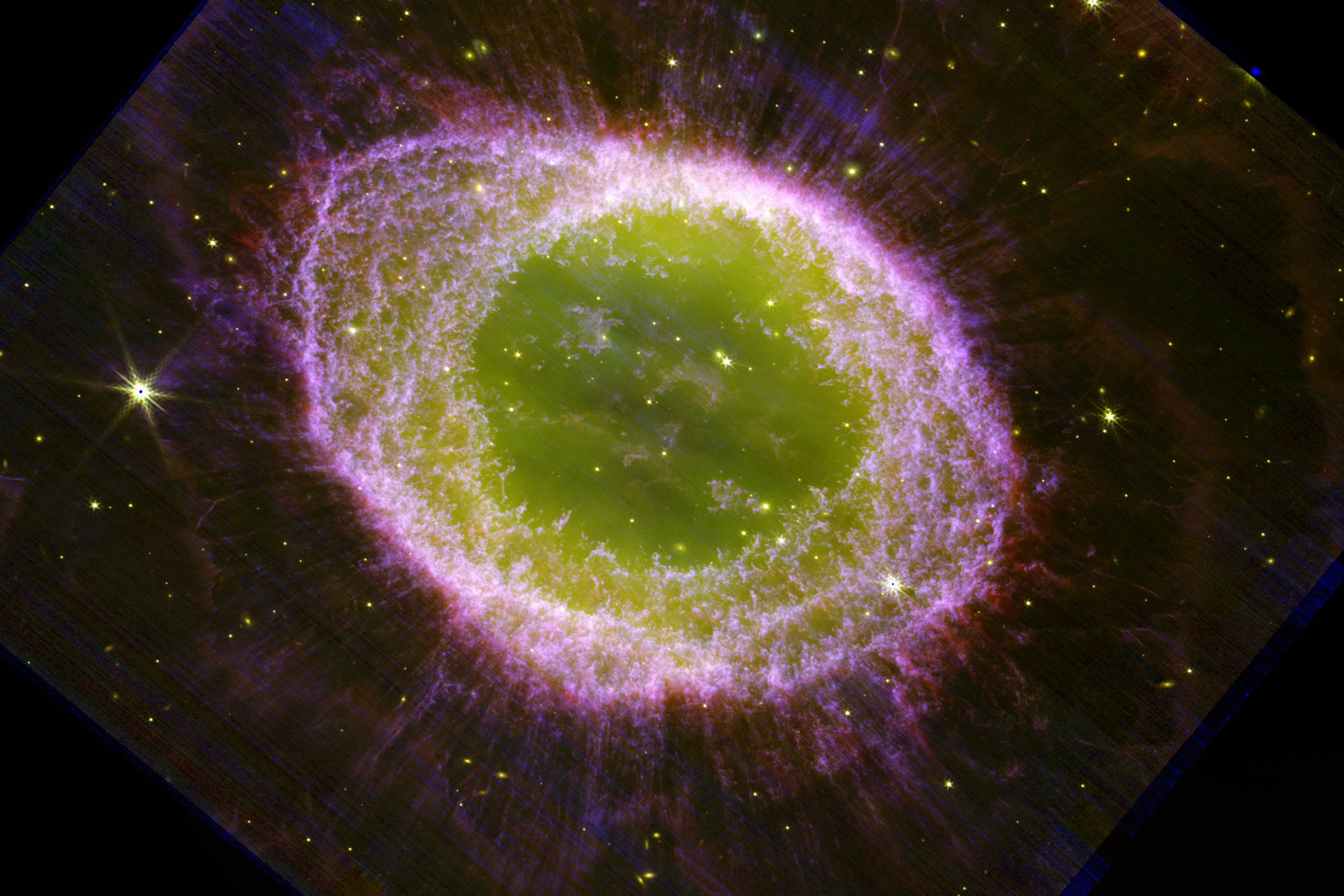James Webb Space Telescope captures new images of the Ring Nebula
The nebula is a well-known object that is visible throughout the summer and is located in the constellation Lyra.

Your support helps us to tell the story
From reproductive rights to climate change to Big Tech, The Independent is on the ground when the story is developing. Whether it's investigating the financials of Elon Musk's pro-Trump PAC or producing our latest documentary, 'The A Word', which shines a light on the American women fighting for reproductive rights, we know how important it is to parse out the facts from the messaging.
At such a critical moment in US history, we need reporters on the ground. Your donation allows us to keep sending journalists to speak to both sides of the story.
The Independent is trusted by Americans across the entire political spectrum. And unlike many other quality news outlets, we choose not to lock Americans out of our reporting and analysis with paywalls. We believe quality journalism should be available to everyone, paid for by those who can afford it.
Your support makes all the difference.The James Webb Space Telescope (JWST) has captured new images of the Ring Nebula revealing intricate details.
The images, released on Thursday by an international team of astronomers led by Professor Mike Barlow from UCL, and Dr Nick Cox (ACRI-ST, France), with Professor Albert Zijlstra of the University of Manchester, showcase the nebula in unprecedented detail.
They provide scientists and the public with a mesmerising view of the celestial wonder also known as Messier 57.
To many astronomy fans the Ring Nebula is a well-known object that is visible throughout the summer and is located in the constellation Lyra.
It has a characteristic doughnut-like structure of glowing gas that gave the Ring Nebula its name.
The James Webb Space Telescope has provided us with an extraordinary view of the Ring Nebula that we've never seen before
The object is a planetary nebula – objects that are the colourful remnants of dying stars that have thrown out much of their mass at the end of their lives.
Researchers say the new images captured by the JWST offer an unparalleled opportunity to study and understand the complex processes that shaped this cosmic masterpiece.
Albert Zijlstra, professor in astrophysics at the University of Manchester, said: “We are amazed by the details in the images, better than we have ever seen before.
“We always knew planetary nebulae were pretty. What we see now is spectacular.”
Dr Mike Barlow, lead scientist of the JWST Ring Nebula Project, added: “The James Webb Space Telescope has provided us with an extraordinary view of the Ring Nebula that we’ve never seen before.
“The high-resolution images not only showcase the intricate details of the nebula’s expanding shell but also reveal the inner region around the central white dwarf in exquisite clarity.
“We are witnessing the final chapters of a star’s life, a preview of the sun’s distant future so to speak, and JWST’s observations have opened a new window into understanding these awe-inspiring cosmic events.
“We can use the Ring Nebula as our laboratory to study how planetary nebulae form and evolve.”
These images hold more than just aesthetic appeal; they provide a wealth of scientific insights into the processes of stellar evolution
The nebula is some 2,600 light-years away from Earth, and was born from a dying star that expelled its outer layers into space.
These nebulae are observed in a variety of shapes and patterns, that often include delicate, glowing rings, expanding bubbles or intricate, wispy clouds.
Like fireworks, different chemical elements in the nebula emit light of specific colours.
This results in exquisite and colourful objects, and furthermore allows astronomers to study the chemical evolution of these objects in detail.
Dr Cox, co-lead scientist, said: “These images hold more than just aesthetic appeal; they provide a wealth of scientific insights into the processes of stellar evolution.
“By studying the Ring Nebula with JWST, we hope to gain a deeper understanding of the life cycles of stars and the elements they release into the cosmos.”